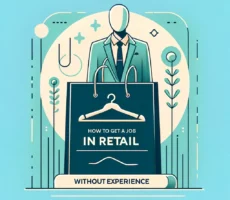Walking into a retail interview can feel like stepping onto a stage without knowing your lines. Suddenly, every customer service scenario question feels like a spotlight on your every hesitation. It’s like preparing for a play where the script constantly changes—exhilarating but slightly terrifying.
This blog post is your backstage pass, offering you the cues and dialogues that will help you navigate through any customer service scenario question thrown your way during a retail interview.
Quick Takeaways:
- Deeply understand the company’s customer service policy and reflect its values in your responses.
- Master the art of empathy and patience in every interaction, especially when dealing with difficult scenarios.
- Employ the STAR Method (Situation, Task, Action, Result) to structure your problem-solving stories, showcasing your abilities effectively.
What Makes a Great Customer Service Response?
Crafting a memorable customer service response is akin to art. It’s all about striking the right chord with the customer. At its core, a brilliant response is built on empathy, patience, and problem-solving skills. It’s not just about finding a resolution but also how you make the customer feel throughout the process.
Empathy plays a huge role. It’s about putting yourself in the customers’ shoes and understanding their frustrations. A response that begins with “I can understand how that must feel…” goes a long way.
Patience is your best friend, especially when dealing with irate customers. No matter how the customer is behaving, keeping your cool and responding calmly can defuse even the most heated situations.
Lastly, your ability to solve problems creatively and efficiently can turn a negative experience into a positive one for the customer. Always aim to provide solutions that meet their needs while aligning with the company’s policies.
How Can You Prepare for Customer Service Scenario Questions?
Preparing for customer service scenario questions is like rehearsing for a play. You need to understand your character—the company’s stance on customer service—and also be ready to improvise. Here’s how you can ace it:
Learn the company’s customer service policy inside out. This means diving deep into their website, reading up on their mission statement, and understanding their values.
Review common retail scenarios. Think about the situations you’ve encountered as a customer. This could range from returning a faulty product to seeking help finding an item. How could these situations be handled?
Practice makes perfect. Role-play different scenarios with a friend or in front of a mirror. This helps in refining your responses and making them sound natural and confident.
A unique tip that most guides overlook? Familiarize yourself with the psychology of communication. Understanding the basics of why people react the way they do can help you navigate difficult conversations more effectively. For example, learn about the concept of ’emotional intelligence’ and how it can be applied in customer service settings.
What Are Common Customer Service Scenarios in Retail?
Let’s delve into some common customer service scenarios that popup in retail interviews. While the situations may vary, the core challenge is to display empathy, patience, and problem-solving skills. Here’s how to tackle them:
Dealing with Difficult Customers: Whether they’re upset about a product or a service, the key is to listen actively, empathize with their situation, and offer a solution or an alternative. Remember, it’s not personal. Your goal is to defuse the situation and find a resolution.
Handling a Return or Exchange: Start by understanding the company’s return policy to ensure your response aligns with it. Then, communicate the process clearly to the customer, showing empathy for any inconvenience they might have experienced.
Managing a Long Queue Effectively: Acknowledge the wait time to the customers and apologize for the inconvenience. If possible, provide updates on how long the wait might be. Demonstrating that you’re aware of and concerned about their time can ease tensions.
Here’s a table summary for quick reference:
| Scenario | Key Approach | |—————————-|———————————–| | Difficult Customers | Listen, Empathize, Solve | | Returns/Exchanges | Know Policy, Communicate Clearly | | Long Queue | Acknowledge, Apologize, Update |
Remember, each of these scenarios is an opportunity to turn a potentially negative experience into a positive interaction. By showing that you genuinely care and are willing to go above and beyond to provide a solution, you’re not just answering a question in an interview; you’re demonstrating your value as a future employee.
How Can You Demonstrate Your Problem-Solving Abilities?
When it comes to nailing your retail interview, showing off your problem-solving prowess is paramount. The trick lies in the age-old wisdom of show, don’t tell. Rather than simply stating you’re great at resolving issues, weave your narrative around specific instances that underscore your adeptness. Let’s break this down into actionable strategies:
Reflect on Your Past Experiences : Before the interview, take a trip down memory lane. Identify instances in your retail career where you faced a challenge and emerged victorious. Was there a time when an item was out of stock, and you found a creative alternative for the customer? Maybe you once calmed down an irate shopper with your empathy and quick thinking?
Use the STAR Method : Structure your answers using the Situation, Task, Action, and Result format. This method keeps your response focused and makes it easier for interviewers to follow your story. For example, explain the Situation (a customer was upset about a late delivery), your Task (to resolve the issue and maintain customer satisfaction), the Action you took (you expedited a replacement and offered a discount on their next purchase), and the Result (the customer turned from frustrated to loyal).
Emphasize Learning and Growth : Highlight what you learned from the experience and how it has improved your problem-solving skills. This shows prospective employers that you’re not just a problem-solver but also someone who learns and evolves from challenges.
One unique tip that stands out — and something most guides miss — is to tailor your problem-solving examples to the company’s specific context you’re interviewing for. If the company prides itself on speedy service, pick an example emphasizing your swift resolution of a problem. Understand the company’s values and reflect that in your examples.
Can You Turn a Negative Situation Into a Positive Outcome?
Retail is unpredictable — situations can spiral out of the blue. The ability to turn a negative into a positive is like having a magic wand in customer service. Here’s how you can wield that wand expertly:
Stay Calm Under Pressure : Easier said than done, but your calmness can defuse even the most tense situations. Take a deep breath, listen actively to the customer’s concerns without interrupting, and maintain a friendly, professional demeanor.
Effective Communication is Key : Always articulate your thoughts clearly. Start by acknowledging the customer’s frustration, explain what you can do, and offer alternatives if the first solution isn’t viable. Remember, it’s not just what you say, but how you say it.
Employ Creative Solutions : Sometimes, thinking outside the box can turn a customer’s frown upside down. For instance, if a popular item is out of stock, suggest a similar, high-quality alternative and provide a small discount or a free sample as a gesture of goodwill.
Here’s a real-life example to illustrate: A customer was upset because a dress they wanted for a special occasion was sold out. The sales associate, recognizing the urgency, found the dress at another store location and arranged for a same-day courier service. Additionally, they offered a discount on the customer’s next purchase and a complimentary accessory. The customer’s disappointment turned into gratitude and loyalty.
In both sections, the underlying theme is clear: demonstrate empathy, remain adaptable, and always aim for a resolution that goes above and beyond expectations. Whether you’re sharing past experiences or spinning a negative scenario into a positive, these strategies not only showcase your skills but also your character — making you a memorable candidate in the eyes of retail hiring managers.







